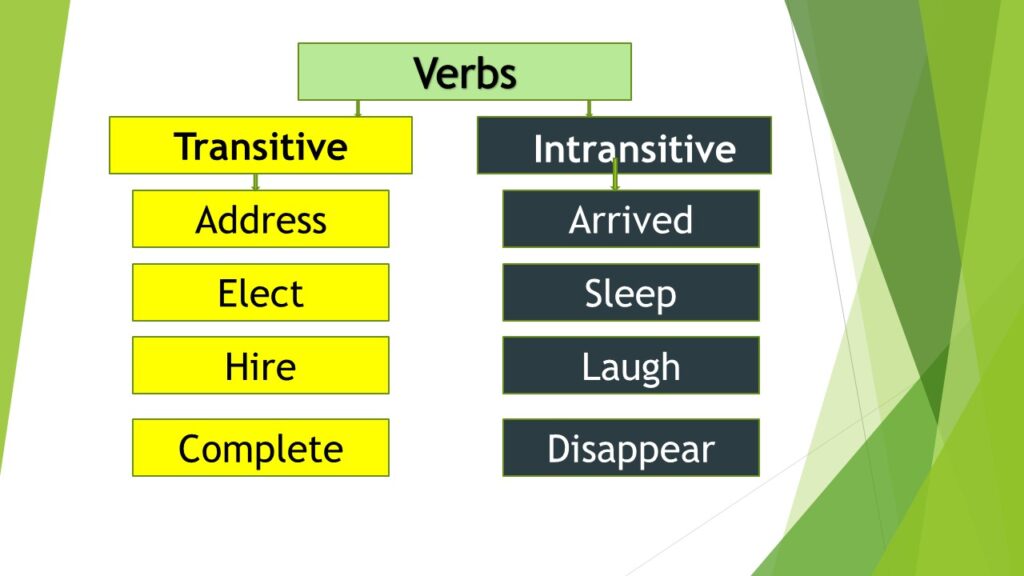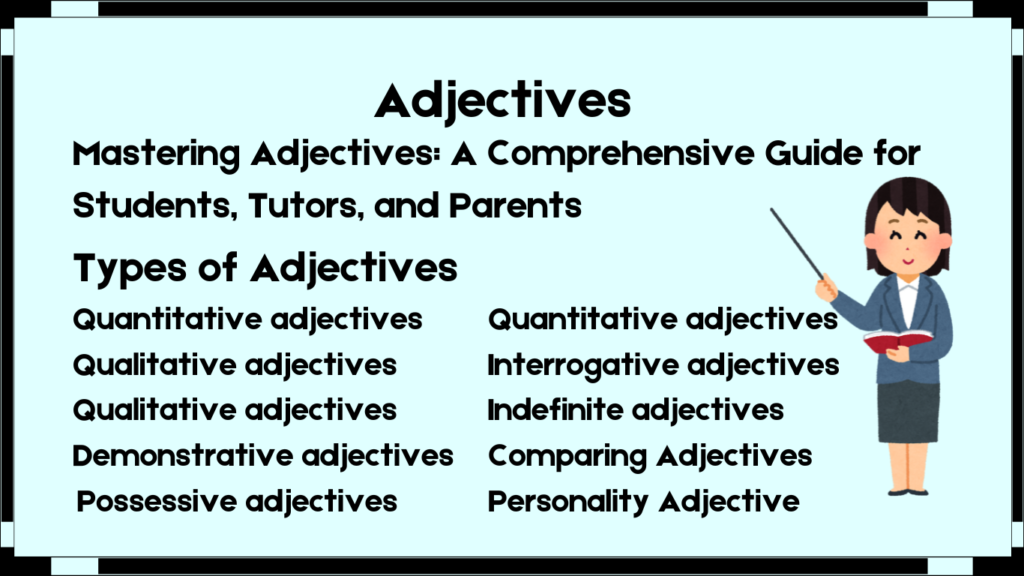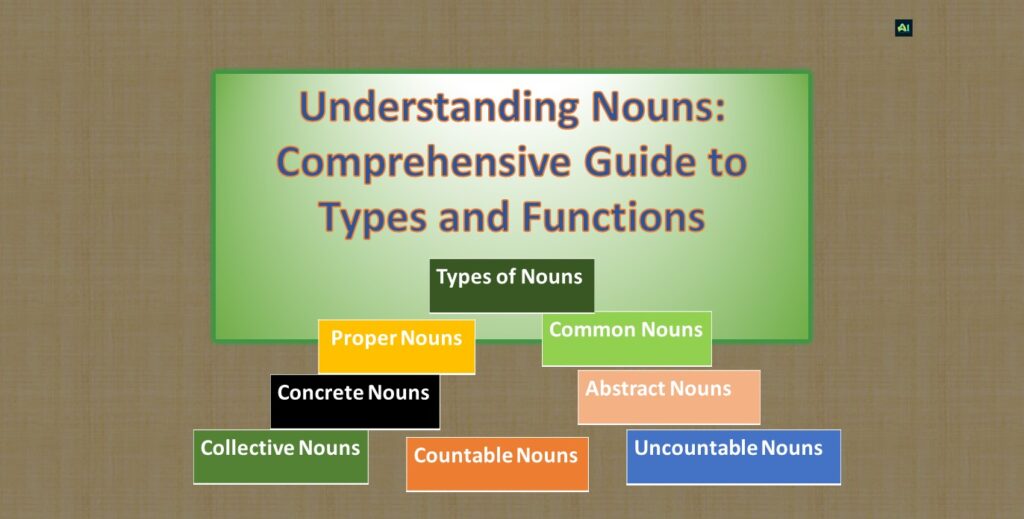Transitive and Intransitive Verbs: A Guide to Clearer Sentences
Understanding transitive and Intransitive verbs is essential for being intentional about your sentences and ensuring sentence clarity. It allows you to effectively communicate your thoughts and ideas, signaling to your readers that you have a solid command of the English language. By mastering the use of transitive and intransitive verbs, you can enhance the precision and flow of your writing, making your message clearer and more impactful. There are two basic categories of verbs: transitive and intransitive verbs. Understanding the distinction between these two types is crucial for crafting clear and concise sentences. In this guide, we will examine both categories, exploring their definitions and usage.
Table of Contents
ToggleWatch a Detailed Video Explanation on Transitive and Intransitive Verbs!
If you are confused about transitive and intransitive verbs, this video breaks it down with clear explanations, examples, and exercises to help you master the concept!
🔹 Learn how to identify transitive verbs and their direct objects
🔹 Understand intransitive verbs with real-life examples
🔹 Interactive practice questions included!
🎯 Watch now and improve your grammar skills!
What is a Verb?
A verb represents the action of the subject—what the subject does, is doing, or has done.
Example: Olu sings. “Sings” is the action of the subject.
Sometimes, the verb acts on someone or something. In other words, someone or something receives the action of the verb. The thing or person that receives the action of the verb is known as the direct object.
Example: Olu sang a song. Who sang? “Olu”. Therefore, “Olu” is the subject (doer). What did Olu do? He sang. “Sang” is the verb (action done by Olu). What did Olu sing? “The song” . Therefore, “the song” receives Olu’s action, so “the song” is the object. In this example, we have SVO: “S” stands for subject, “v” stands for verb, and “O” stands for object.
Here is another example: John plays piano. “John” is the subject, “plays” is the verb, and “piano” is the object.
Understanding Transitive and Intransitive Verbs
Let us now examine their definitions, usage, and distinctions to gain a clearer understanding of how these two types of verbs function in sentences. By understanding these concepts, you will be better equipped to use verbs more effectively in your writing, ensuring clarity and precision.
What is a Transitive Verb?
A verb that must take direct object is a transitive verb. The subject needs an object to act on, and the action (verb) needs to fall on someone or something. The direct object refers to who or what suffers the action. The sentence is incomplete without the direct object.
Example: If I tell you “John plays…,” you want to know what he plays. This means the object is missing, and the sentence is not complete until I tell you what he plays.
A transitive verb answers the question “what” or “who.”
Example: John plays piano. You would ask, “What does John play?” The answer is “piano.”
Example: Jack likes me. Who does Jack like? The answer is “me.”
In the first example, “piano” is the direct object of “plays.” In the second example, “me” is the direct object of “likes.” Therefore, “plays” and “likes” are transitive verbs in those sentences.
What is an Intransitive Verb?
An intransitive verb does not take a direct object. If an action verb does not need an object, it is an intransitive verb. The action expressed in the verb is complete without a direct object.
Example: The student walked slowly to the classroom. “Walked” is the intransitive verb . There is no object receiving the action, and no object is needed.
Example: She runs like a cheetah. “Runs” is an intransitive verb because it does not need an object to complete the action.
Identifying Transitive and Intransitive Verbs
Identifying transitive and intransitive verbs in sentences can sometimes be challenging. However, understanding their characteristics can simplify the process.
Transitive Verbs: Look for verbs that transfer the action to a direct object. Ask yourself if the verb requires an object to complete its meaning.
Example: The dog chased (transitive verb) the cat (direct object). Here, the verb “chased” transfers the action to the direct object “the cat.”
Intransitive Verbs: Identify verbs that do not need a direct object to finish their meaning. These verbs stand alone and express a complete action.
Example: The sun shines (intransitive verb). In this sentence, the verb “shines” expresses a complete action without the need for a direct object.
Verbs Used as Both Transitive and Intransitive
Some verbs can be transitive in certain contexts and intransitive in others, depending on what the speaker wants to achieve with the information. Below are some verbs that can act as both transitive and intransitive:
Examples: sing, drive, read, understand, run, change, close, open, eat, play, move, grow, take off, melt, speak, taste, break, stop, steal, win.
Example: He sang the hymn (transitive, as it has a direct object ‘hymn’). He sang like a choir master (intransitive, as ‘sang’ does not need an object in this sentence).
Example: He drives a car (transitive). He drives at night (intransitive).
Verbs Used Only as Transitive
Some verbs are used only as transitive, meaning they must be used with an object. Here are some examples:
- Address
- Correct: She addressed the audience.
- Incorrect: She addressed.
- Betray
- Correct: He betrayed his friend.
- Incorrect: He betrayed.
- Blame
- Correct: They blamed the weather.
- Incorrect: They blamed.
- Complete
- Correct: She completed the project.
- Incorrect: She completed.
- Conduct
- Correct: He conducted the experiment.
- Incorrect: He conducted.
- Elect
- Correct: They elected a new president.
- Incorrect: They elected.
- Facilitate
- Correct: The manager facilitated the meeting.
- Incorrect: The manager facilitated.
- Hire
- Correct: They hired a new employee.
- Incorrect: They hired.
- Incur
- Correct: The company incurred significant losses.
- Incorrect: The company incurred.
- Receive
- Correct: She received a package.
- Incorrect: She received.
These verbs necessitate a direct object to convey a complete action, making them exclusively transitive verbs.
Verbs Used Only as Intransitive
Some verbs are used only as intransitive. Here are examples demonstrating that they are intransitive:
Arrive: The train arrived at the station.
Sleep: He sleeps for seven hours every night.
Laugh: The children laughed loudly.
Smile: She smiled warmly at the guests.
Cry: The baby cried loudly in the night.
Disappear: The magician made the rabbit disappear.
Die: He died peacefully in his sleep.
Run: The athlete ran swiftly.
Exist: Many believe that extraterrestrial life exists.
Sneeze: She sneezed loudly due to her allergies.
These verbs demonstrate actions that can be expressed without requiring an object to complete their meaning, making them solely intransitive verbs.
By using transitive and intransitive verbs correctly, you demonstrate English proficiency and command of the language. Mastery of these verb types allows you to create precise and dynamic sentences, which enhances both written and spoken communication. This knowledge is particularly beneficial for non-native speakers aiming to improve their English skills, as it helps in understanding sentence structure and verb-object relationships. Additionally, Understanding Transitive and Intransitive Verbs aids in better comprehension of reading materials and more effective writing.
Furthermore, in professional and academic settings, the correct use of transitive and intransitive verbs can significantly impact the clarity and effectiveness of your communication. Whether you are writing an essay, giving a presentation, or engaging in everyday conversation, Understanding Transitive and Intransitive Verbs ensures that your message is conveyed accurately and efficiently.
Practicing the identification and usage of transitive and intransitive verbs in various contexts will reinforce your grammar skills. Try creating sentences using both types of verbs, and pay attention to how they interact with direct objects (or lack thereof). Over time, this practice will become second nature, and you will find yourself using these verbs correctly without conscious effort.
In summary, the distinction between transitive and intransitive verbs is a fundamental aspect of English grammar. By mastering this distinction, you enhance your ability to communicate clearly and effectively, which is a crucial skill in both personal and professional spheres. As you continue to learn and practice, you will develop a deeper appreciation for the nuances of the English language and become a more confident and proficient communicator.



